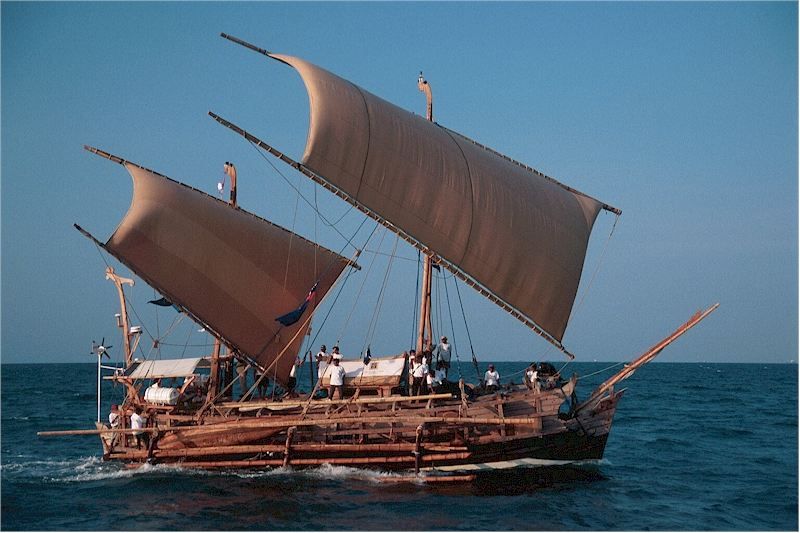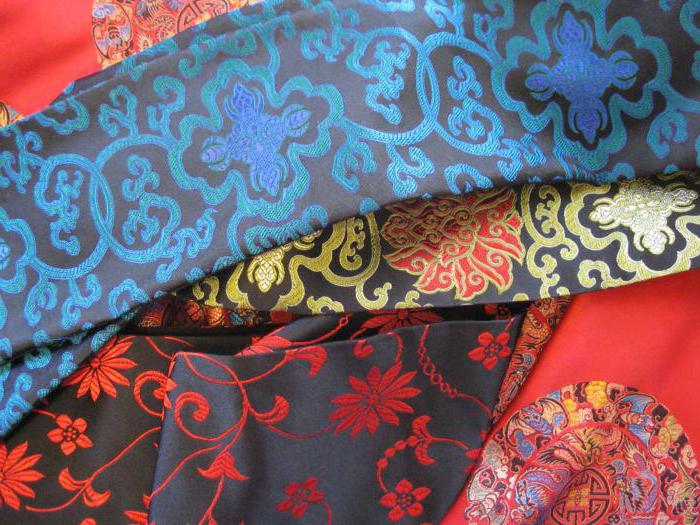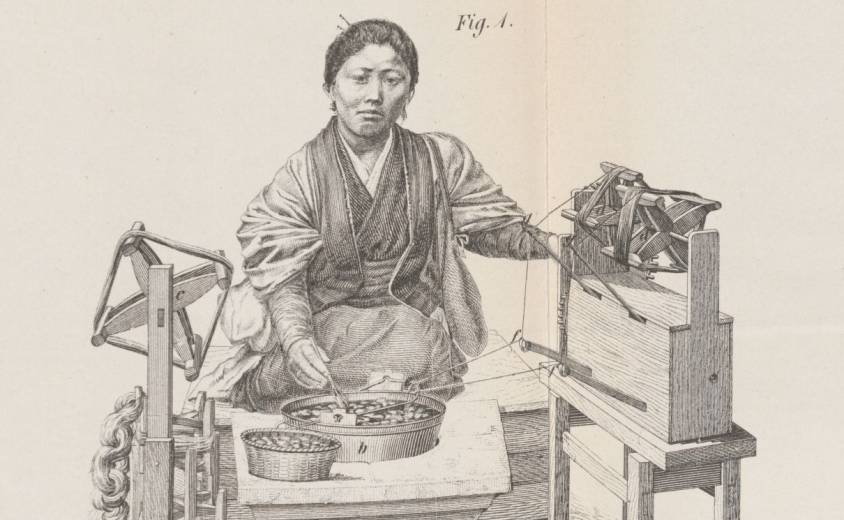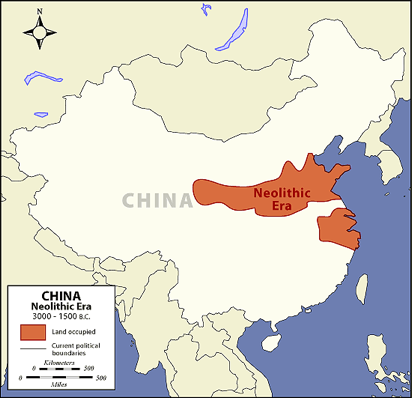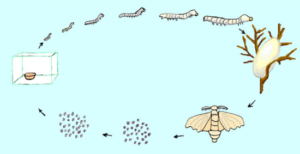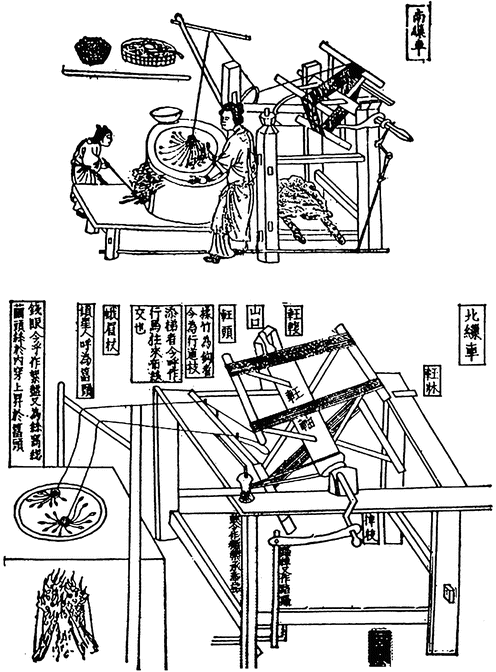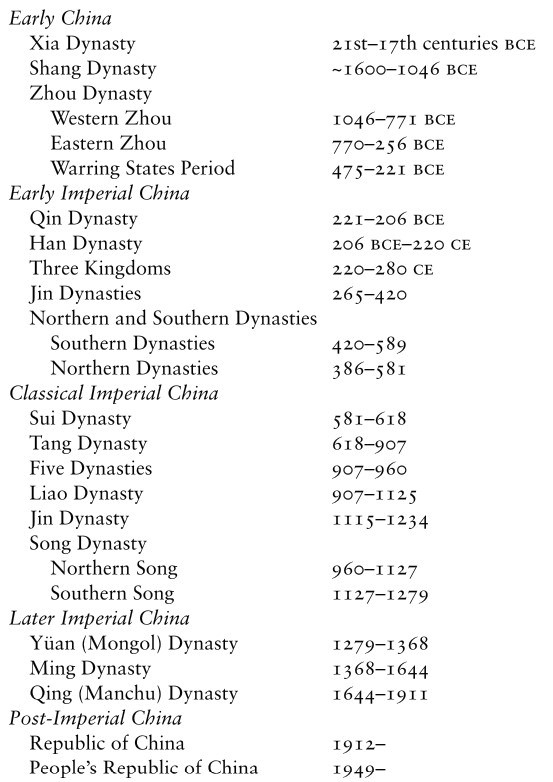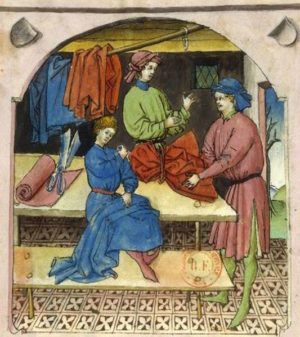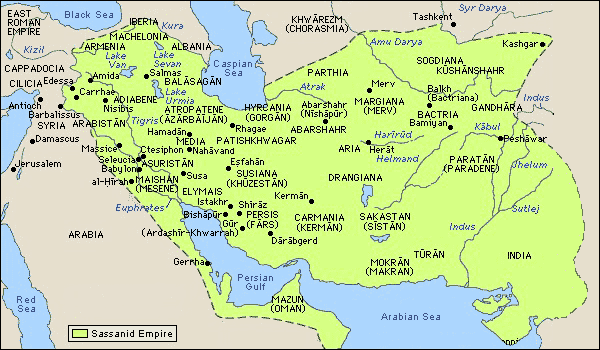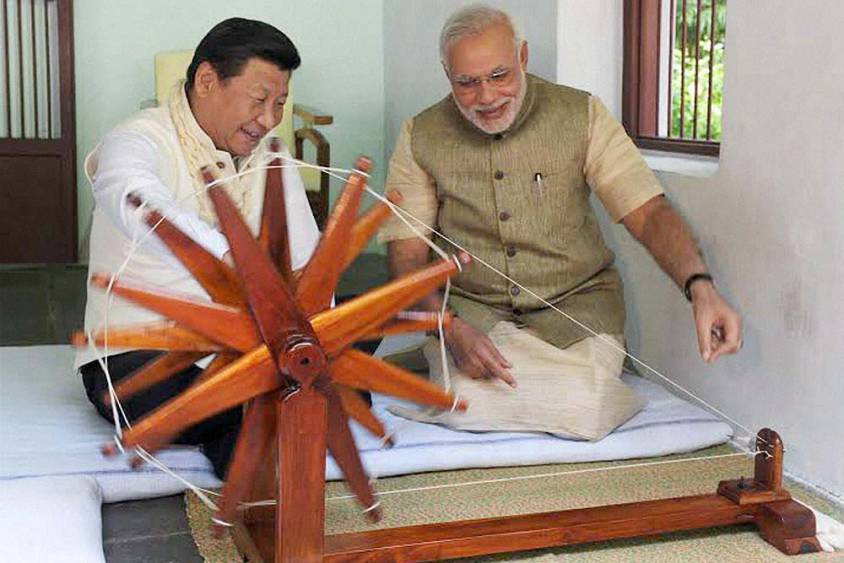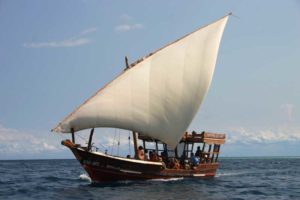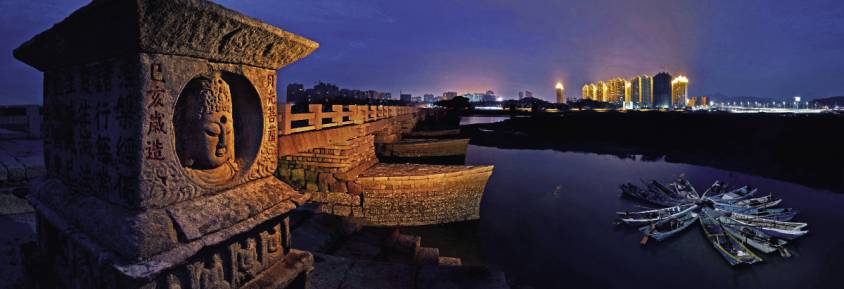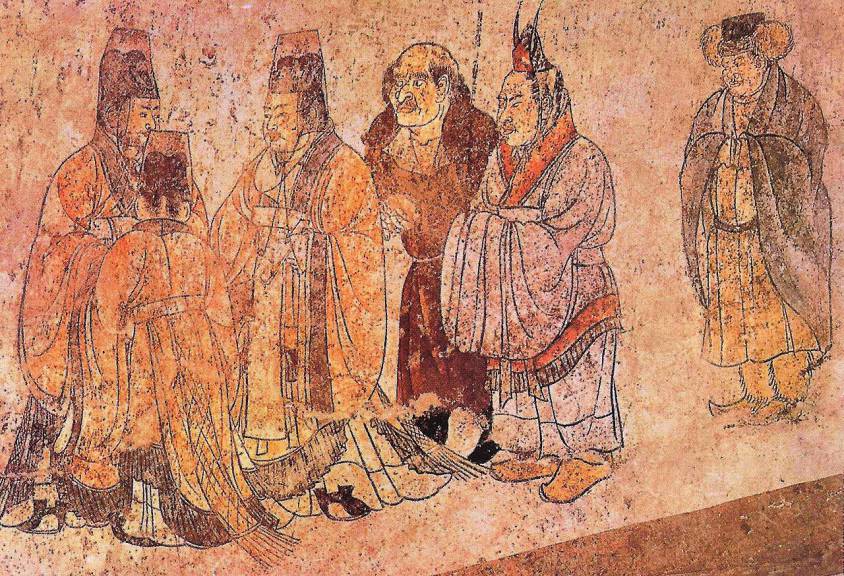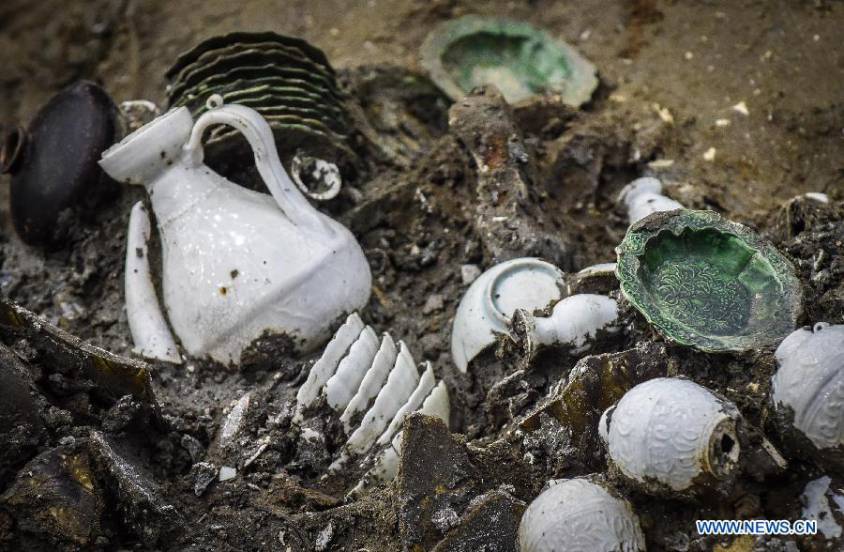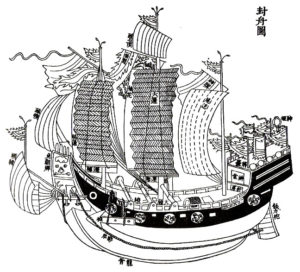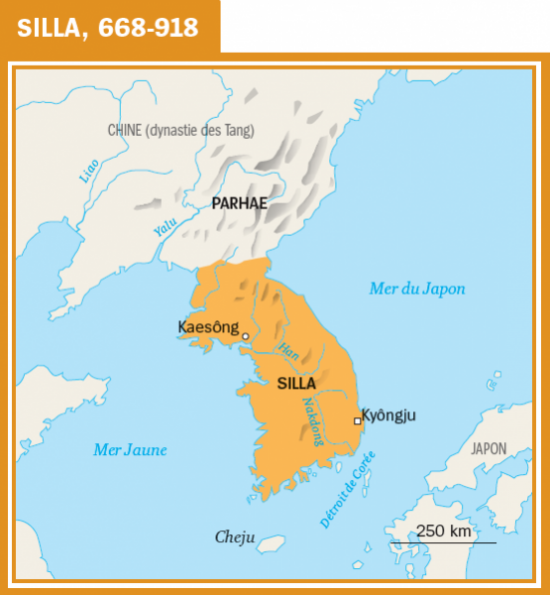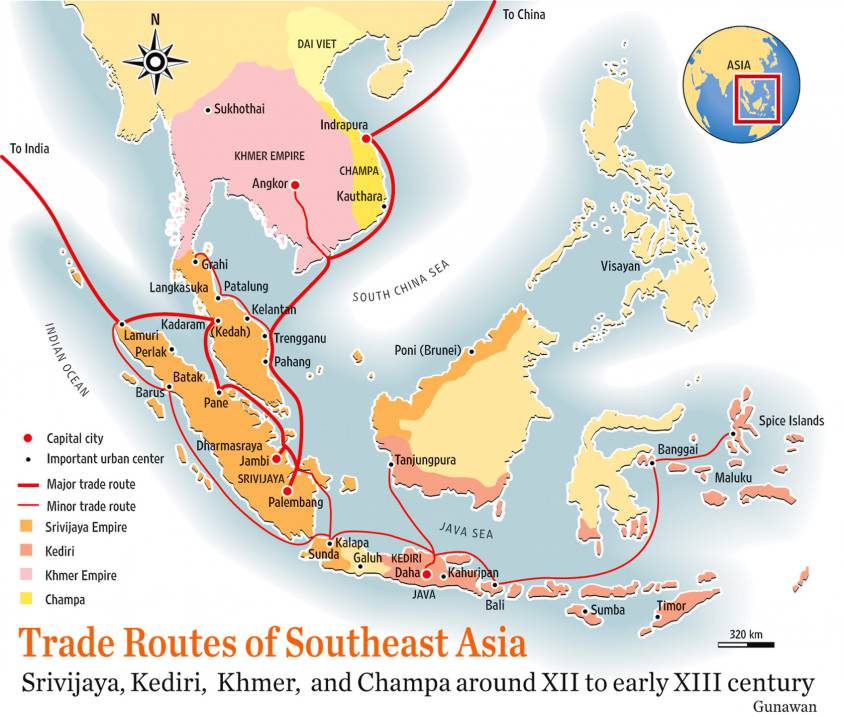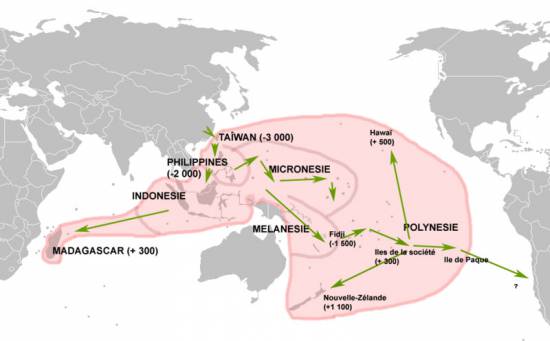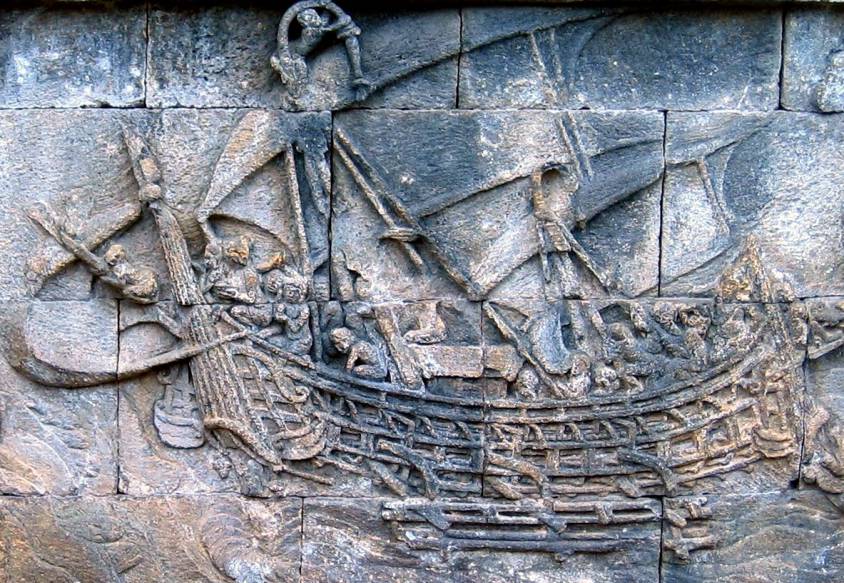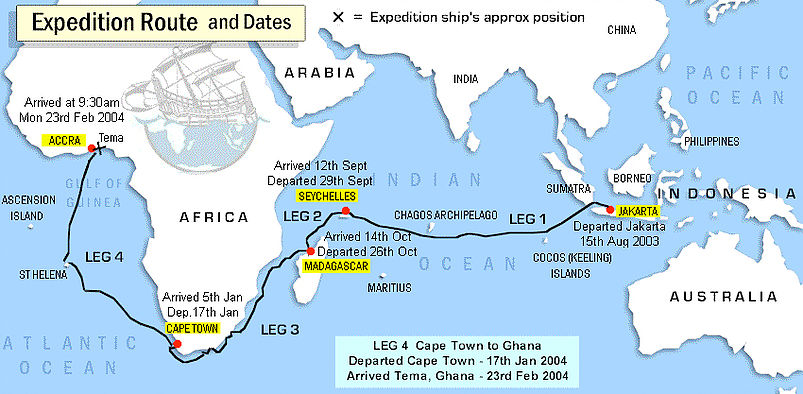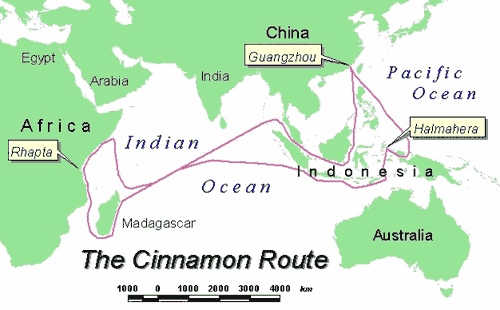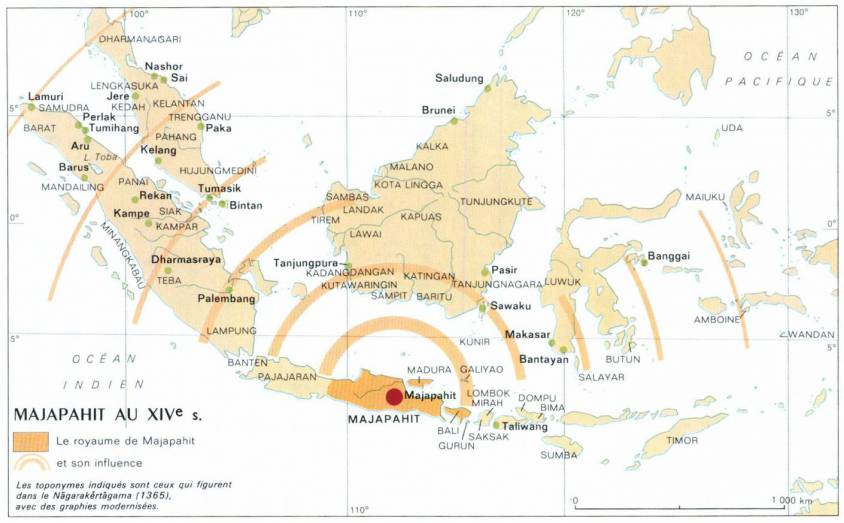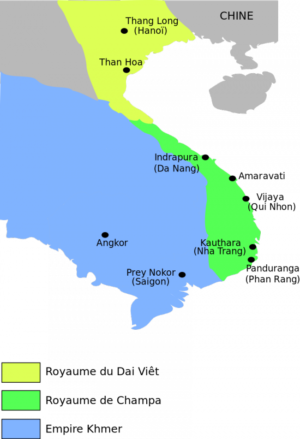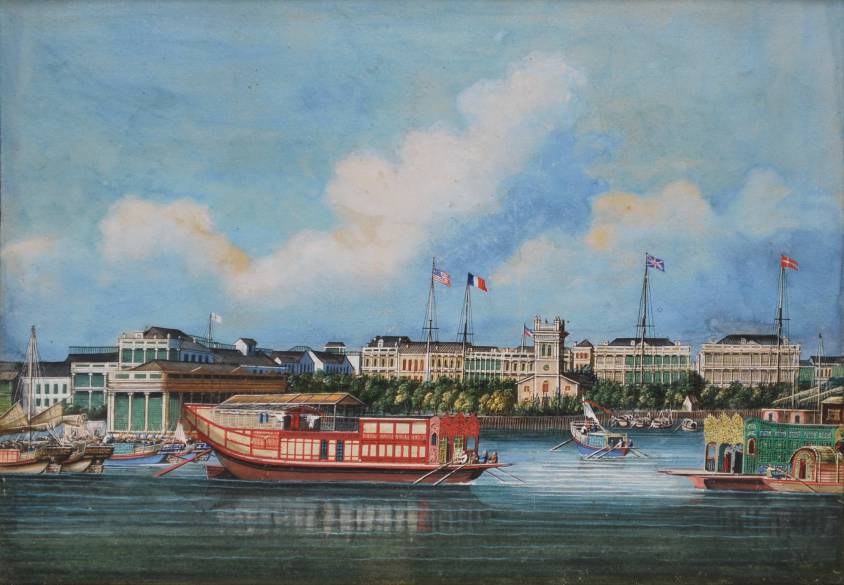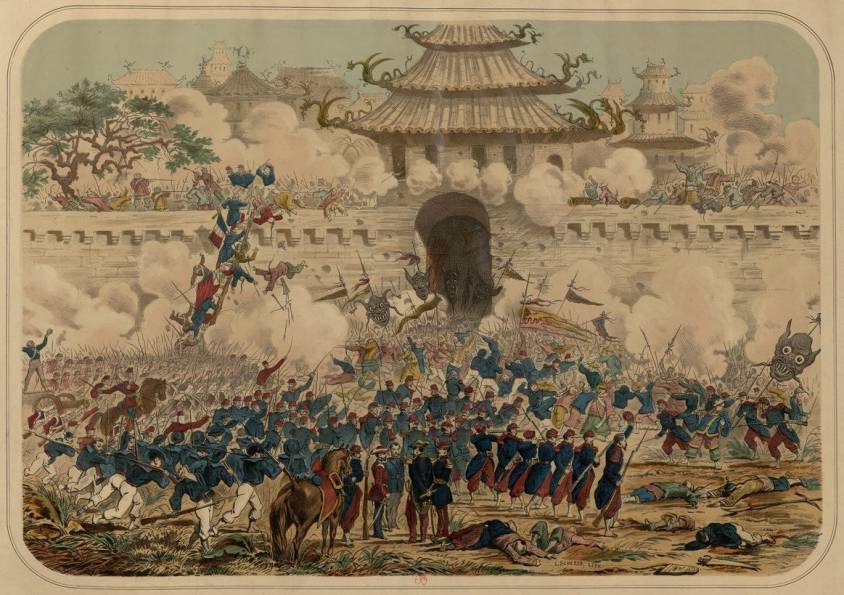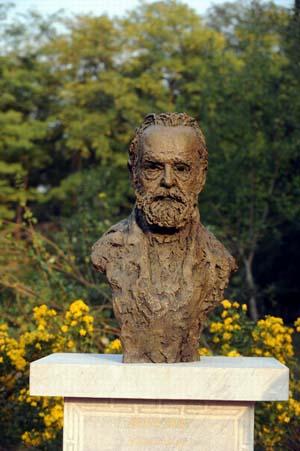Étiquette : Korea
Thanks to WEST’s new record, world’s nuclear fusion community moving forward


On Monday May 27, 2024, Karel Vereycken talked to physicist and nuclear fusion specialist Alain Bécoulet for Nouvelle Solidarité. He has been in charge of the ITER project’s engineering department since February 2020.
ITER is a large-scale scientific experiment intended to prove the viability of fusion as an energy source. ITER is currently under construction in the south of France. In an unprecedented international effort, seven partners—China, the European Union, India, Japan, Korea, Russia and the United States—have pooled their financial and scientific resources to build the biggest fusion reactor in history.
Alain Bécoulet is a former research director at the French Alternative Energies and Atomic Energy Commission (CEA), and in particular director of the IRFM, the Institut de recherche sur la fusion par confinement magnétique (Institute for Research on Fusion by Magnetic Confinement).
Karel Vereycken: Mr. Bécoulet, good morning, it’s great to have you on the phone.
Alain Bécoulet: Hello Mr. Vereycken, if I’ve understood correctly, you’re interested in what happened at WEST, in connection with the press releases that went out just about everywhere around May 15. (more below)
That’s right; I’ll give you my impressions and you can correct me. I understand that the Tore SUPRA Tokamak (in southern France)1, who with six minutes held a world record in duration till 2021, was a bit like your baby.
To tell the truth, I was director of the IRFM2, in charge of Tore SUPRA. If it can be considered “my baby”, it’s because under my governance it was radically modified and upgraded, and renamed “WEST”. Before me, it was Robert Aymar‘s baby3.

Right! But in WEST, it’s the W that does it all. And it’s a W for tungsten, a very heat resisting material that absorbs less than graphite and makes the machine more efficient?

Yes, it does. The major change we made with WEST, is that we went from a circular-limiter machine 4 to a “divertor” machine.5
On Tore SUPRA, the vertical plasma action was a circle resting on a graphite limiter and the plasma simply touched it.
For some years now, we’ve discovered that making a plasma in the shape of a D, or in the shape of a fish with an X point — called a “divertor” — produces much better results in terms of confining heat and impurities, particles, etc. So it was time for Tore SUPRA to go there.
At the same time, Tore SUPRA itself made it clear for us, that for ITER, it was not possible to continue with carbon – which was ITER’s original intention – and so ITER switched and was reconfigured to tungsten.
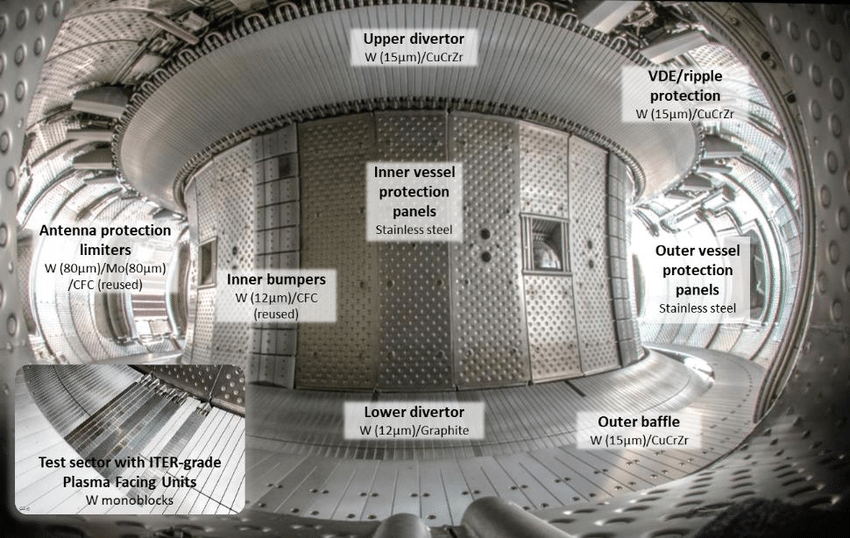
That’s when we took the opportunity to install a cooled tungsten divertor in Tore SUPRA. What’s more, Tore SUPRA’s mission has always been, even before ITER – we’ve been talking about it for a very long time now – the development and integration of technological solutions, and not so much performance-fusion.
If you put tritium in Tore SUPRA, you’re not going to get much in the way of power: it’s too small and not powerful enough in any ways to make fusion reactions of any note; but on the other hand, it’s perfectly relevant for all technological developments – it was on Tore SUPRA, it has to be recalled, that the first successful full-scale test of the superconducting coils now used in ITER took place!
I’m fully aware of that.
It was also Tore SUPRA that supplied all the rules for actively cooling all the components in front of the plasma, including diagnostics [i.e. measuring instruments], etc.; not forgetting solutions for continuous additional heating, in short a huge amount of technology.
So the idea, in the transition from Tore SUPRA to WEST, was to continue along the path of the “actively cooled tungsten divertor”.

I think the Koreans, too, with KSTAR, had already.…
There are several superconducting machines that have made equivalent advances –more successive than simultaneous– and that have inspired others; in this case, before talking about KSTAR, the machine that is closest to WEST, its little sister – you’re going to smile, but I didn’t call it WEST for nothing — is a machine that started up when Tore SUPRA was already operating, in Hefei, China, called EAST — with which we have cooperated enormously, both on coils and on plasma components, etc.

So the two laboratories have cooperated enormously; I chose the name WEST because we wanted to change the name of Tore SUPRA, to rejuvenate it and mark the fact that we were making this technology; so we called it WEST, a sort of sister machine to EAST, and the two machines really work together (EAST has now installed a tungsten divertor, etc.). ); even some of the modifications we made to WEST were made in cooperation, in partnership with the EAST machine, with the Chinese Academy of Sciences, which supplied us with components, in particular the power supplies for the divertor coils, the new ICRH antennas, etc.; we had all this done by the Chinese.6
It’s extraordinary that this kind of cooperation can still take place in this world of conflict…
It really is! As for KSTAR, it’s quite a similar machine too, but I’d call it less pioneering. It’s only now arriving in this kind of world; it’s a long way behind –not that I’m blaming them, because since the teams are smaller, it’s more difficult– but that doesn’t stop us from cooperating a lot with KSTAR.
The only real difference with WEST lies in the coils, which are all inside a single cryostat (refrigeration system) – as with ITER, whereas in Tore SUPRA, when we built it, the coils were each in a separate cryostat.
To sum up: today, the large superconducting machines accompanying the ITER project are WEST, EAST, KSTAR and now the new JT60SA tokamak which has just gone into operation in Japan. It’s the size of the JET (at Culham in the UK) in superconductor, but doesn’t yet have a tungsten environment, and won’t for several years yet; so it’s not yet fully in a world as relevant, but it’s coming! And because it’s larger, it’ll probably outperform those EAST, WEST, etc. machines.
The press, and the official press release, reports a 15% gain in energy produced – which is still less than the energy spent on the reaction – and at the same time, they talk of a doubling of plasma density.
Please note: machines like WEST, EAST and KSTAR will never produce power fusion, for at least two good reasons:
- they’re too small;
- they’re not designed to hold tritium.
So there’s no fusion in these machines. Also, beware of energy gains and the like: these are gains in energy stored inside the machine, but not at all in energy supplied, in energy produced by fusion energy.
It’s not yet “break-even” (when the energy produced exceeds that of the reaction).
In fact, we improve confinement and increase confinement time. This improves the possibility of fusion, but we don’t enjoy fusion in these machines, which are too small and not powerful enough for that, particularly in terms of core plasma.
On the other hand, they are used because their edge plasma, i.e. the plasma inside the plasma interacting with structures such as tungsten, etc., is very similar to ITER’s. That’s why they’re so interesting, and as they can produce very long-lasting plasmas, the tests carried out in these machines are perfectly relevant to ITER.
So I’d like to come back to one of your questions, namely how this advances the promises of ITER. ITER is being built, and things are being manufactured, but ITER is a kind of big eater, constantly asking: “Can you continue the research?”

Obviously, we’re into things we’ve never tested, so anything we can test, anything that can debug things for us, is very welcome. So these machines, in particular WEST, EAST, etc., are helping us to consolidate our position, both in terms of design and in terms of manufacturing solutions –a divertor like the tungsten divertor currently cooled, it works!
And what WEST has just demonstrated– compared with the last time, when it achieved very high performance, particularly in terms of duration, with the Tore SUPRA configuration, on a carbon limiter, etc. — it did so in even more relevant conditions, thanks to a tungsten divertor.
The result of WEST was 364 seconds, or 6 minutes and 4 seconds, with an injected energy of 1.15 GJ, a stationary temperature of 50 million°C (4 keV) and an electron density twice that of the discharges obtained in the previous tokamak configuration, that of Tore SUPRA.
However, what’s really new and very important for ITER is that when these machines do this, it’s with components facing the plasma that are the same as ITER’s. We’ve taken great care to ensure that the WEST divertor has exactly the same technology as the ITER divertor. That’s how we test this technology, over timescales and with power flows arriving on these components that are highly relevant, as they are representative of the conditions in which they will live in ITER.

So ITER has become a globalized scientific experiment, decentralized and centralized at the same time.
ITER is the place where all the world’s fusion knowledge is being synthesized; but this process didn’t stop the day we signed the treaty, it’s being synthesized every day!
We continue to feed ITER with scientific and technical results. For example, if a machine says to us “wait a minute, you’ve done that, but we’ve found results that are different now that we’ve done more work”, we look at that very carefully, to find out whether or not there are any impacts. We’re in constant contact with all these people, to find out what’s coming out of the labs, experiments and simulations, and to find out whether or not there’s an impact on ITER, in which case we’re able to rectify the situation according to the scale of things
This sharing of cooperative data takes place in conditions of great trust?
It’s a scientific community that works like a scientific community, with no preconceptions, no ulterior motives, nothing at all.
A bit like the astronauts on the international space station?
Absolutely. We used to say “in the old days, it was taken for granted”, but now it’s true that it’s become almost surprising. If there’s a result in a Russian or Chinese machine, we have access to it and then we understand, we work, we discuss with them, it’s really very open.
That’s very promising.
We have to fight against the journalists who love to wonder whether there’s competition, whether someone has won or whatever…. That’s not what we’re about at all; we’re about cooperative scientific development. Everyone works in their own corner, of course, but for everyone! There’s no such thing as “I know, I know”, no, none of that exists in the world of fusion.
In the article I’m preparing, I’ll conclude by saying that the big problem with ITER is that there’s only one problem!
In a way, it’s almost true, it’s not the “big problem”, but it’s something that doesn’t encourage acceleration; competition encourages acceleration, we agree on that.
After all, the Chinese have 6 fusion reactors…
Be careful, they’re not “reactors”, beware of the vocabulary. They’re experiments, Tokamaks, plasma experiments, all much smaller. The biggest one I mentioned, in Japan, is ten times smaller than ITER!
Now there are start-ups and others, which we’re hosting here (at the CEA center in Cadarache, France) for three days; 50 start-ups are here, downstairs in the amphitheater, chatting with us; they’re all convinced they’re making reactors, but no! They’re just doing experiments, manips, experimental prototypes. Yes, even ITER isn’t a reactor. Mind you, the meaning of the word “reactor” is to produce electricity or energy, and we’re not there yet!
If someone tells you he is selling you a reactor, you can laugh in his face, because it’s not true, and it will remain so for a long time, unfortunately or fortunately, I don’t know. As far as the reactor phase is concerned, we’ve only just begun, with ITER, the transition to industry. That’s what we’re also doing these days, looking at how to transfer knowledge from laboratories – and ITER is THE world laboratory, in the true sense of the word, in the sense of a public research laboratory. How do we begin to transfer this to the industrialists who will have to build the reactors? But the time scale here isn’t next week!
Wouldn’t your real competitor be the National Ignition Facility (NIF)?7
Not even close! Because with the Americans, it’s in a way even worse, because they’re even less developed in their public research, it’s a long way from maturity. They once did a demonstration in a machine that wasn’t designed for it, and so on.
So if we wanted to go from the NIF to the reactor, we’d already have to make up all the ground we’ve accumulated since the state of magnetic fusion with the big JET experiments in 1997. So we’re almost 30 years away from reaching the levels of technological maturity, integration and overall maturity needed to move towards a reactor. And we, too, are still a long way from moving towards the reactor.
As far as competitors are concerned, to be honest, no one feels like a competitor today, and this is no joke: may the best man win! The problem is so complicated, and the stakes so high, that whoever comes up with the solution will have us all on our feet! There’s no such thing as competition.
We’re starting to see, with these new start-ups, people saying “yes, but we’re moving towards industrial solutions, etc., so we may develop patents that we obviously don’t want to reveal or sell”. Fair enough!
But hey, if they know how to make one of the “technological bricks” and it has a patent, good for them. But that’s not even going to stop us talking. A patent, once you’ve registered it, isn’t a secret, it’s simply something that belongs to you and that you can put on the public square; whoever uses it is just going to have to pay for it, that’s all. So it’s not a war or anything.
The problem is really extremely complicated, and we’re now entering the pre-industrial world of the thing, which is very exciting, isn’t it! I started my career as a theoretician 35 years ago, and I can tell you that we were really on the calculator and not even on the computer yet. Now we’re in: 1/ a complete demonstration of the feasibility of the whole system with ITER, which is in a way the end (the objective) of fundamental public research; 2/ the moment when we’ll say “here’s the great recipe, now it’s up to you to industrialize it, improve it, make it economically viable, etc.”. But ITER still has to show that we can do it, and I believe we can, even though we’re still building the machine and haven’t yet made plasma! But then again, on paper it’s always beautiful…
What do you see as the final hurdles? What more can the public authorities in the various countries do?
I’d encourage you to keep an eye on things until October-November, when the International Atomic Energy Agency (IAEA) will issue a strategic document, prepared by all of us –and I’m one of its key authors. It’s a global strategy document on the development of fusion energy, i.e. the production of energy through fusion.
It’s a very interesting document which, in around twenty pages, covers all the regulatory, technological, scientific and industrial aspects – everything you could possibly dream of: it’s got it all!
And it gives a great deal of information on the challenges facing this community – which is in the process of moving from a purely public research community to a mixed public-private community, moving towards industry, etc. – and on what remains to be done by this community, in terms of nuclear regulations, industrialization, work on the overall efficiency of all sub-systems, and availability (a reactor can’t just run for three minutes every day, it has to work 24 hours a day for 40 years).
This strategic document, which will be issued by the International Agency, should enable all players – I’d almost say “outsiders”: investors, the press, politicians, etc. – to understand where the merger stands and what remains to be done. So it’s a fairly ambitious document, with such a lofty goal, but one that has been made simple and readable for once; we’ve put a lot of effort into it, and I think we’ve succeeded.
It’s really condensed: each paragraph covers 40 or 50 years of research (!), but I think it’s understandable; at the moment it’s being edited by the IAEA, and will be published in early autumn.
Ok, we’ll watch that.
And finally, here are my thoughts on what remains to be done for fusion:
- New technological building blocks. There are things that even ITER won’t be able to do, such as fully demonstrating the closure of the tritium cycle – how to make tritium, and how to really burn it in situ; we’re going to do a few demonstrations, but we don’t yet have the complete cycle, and we won’t have it just with ITER.
- Materials. Since magnetic fusion generates very energetic neutrons, and lots of them – a machine like ITER is designed to live for a certain time with a certain plasma rhythm, so it has no problem surviving these neutrons. But if we built the same ITER and ran it for 40 years, 24 hours a day, it wouldn’t last; its materials wouldn’t stand up to the shock. So we need other materials, and materials research and development.
- This brings us to maintenance: how can we learn to intervene in these kinds of objects without disturbing them too much, working with robotics and appropriate intelligence to understand these extremely complex systems? So we also need to model them; some elements are very difficult to manufacture, so we need to think about how to work on the design so that manufacturers have less difficulty in doing what they’re asked to do, etc.
- There are also nuclear regulations.
Is this new measuring device just demonstrated on WEST really a breakthrough?
The first to communicate this WEST result were the Americans, which surprised me, but hey, why not?
Yes, it surprised me too.
Because of an unfortunate sentence at the beginning of their article, we got the impression that WEST was a machine from the Princeton laboratory!
Yes, that’s right!
International Cooperation
I spoke to you about the collaboration with China; when I created WEST, we set up a collaborative, partnership-based process that is almost even more ambitious than ITER. We partnered some thirty laboratories around the world to help us build WEST. It thus became a kind of international machine, operated by the CEA without any problems, but an international machine, and we played the same role as ITER: we tried to do what we call supply in kind –I mentioned the Chinese, who gave us power supplies, heating antennas, etc., but there are many countries like that: the Indians have manufactured and supplied us with things, and in this case the Princeton laboratory has designed, manufactured and installed a diagnostic: what you call a measuring instrument is in fact an advance that we test on the machine, and the Americans, or the Princeton people now, can now say “there, we know how to do that, and the proof: we tested it there and there, etc.”. You can think of these major research instruments (like WEST, EAST, etc.), particularly in the field of fusion, as test benches for all kinds of things.
Do we have a machine that actually makes plasma? It’s a bit like CERN (Geneva based particle accellerator), where you’ve got a device that accelerates particles, and then you’ve got lots of people who come to watch, put particles together, make them collide like this, put them in this detector, make them do something, and exploit the science that goes with it.
A Tokamak is also a test bench somewhere, for testing components with plasma, diagnostics, heating systems and so on. So it lends itself well to partnership, because you’ve got a central unit, a central operator who’s going to do the bulk of the machine, who’s going to rectify the coils or the enclosures, etc.; and then afterwards, you can have a huge number of people who are going to come and contribute to a brick that we’re going to put into this machine.
And WEST works with China, with Korea, with many French laboratories –CNRS laboratories and universities that simply bring us diagnostics or simulations – with the United States, with India and with many other countries. And we have a steering committee; for this machine, it’s not just the CEA that decides on its experimental plan: once a year, people from all these labs get together to examine what we’ve done and what we want to do with this machine. Remember that these are always integrated contributions, mixing technology and physics.
It’s wonderful! Thank you for your answers, which have shown us the global, shared process towards a more peaceful world.
We’re trying… We believe in scientific diplomacy here. It’s not easy, it’s no easier than normal diplomacy, but scientific diplomacy does exist, it’s an aspect we believe in and demonstrate every day, we show that it exists and that it also contributes, effectively, to the planet’s progress, even if sometimes it’s more difficult… I’m used to comparing it to sports or artistic diplomacy; the Olympic Games shouldn’t turn as sour as it’s turning, it doesn’t make sense.
Thank you, congratulations, we’re proud of you and your teams, keep up the good work!
Thank you very much. See you soon.
- With a major radius of 2.25m (machine centre to plasma centre) and a minor radius of 0,70m, Tore Supra (before it was reconfigured as WEST) was one of the largest tokamaks in the world. Its main feature was the superconducting toroidal magnets which enabled generation of a permanent toroidal magnetic field. Tore Supra was also the only tokamak with plasma facing components actively cooled. Theses two features allow the study of plasma with long pulse duration. ↩︎
- Institut de recherche sur la fusion par confinement magnétique (Institute for Research on Fusion by Magnetic Confinement. ↩︎
- Robert Aymar was the Director General of CERN (2004–2008), serving a five-year term in that role. In 1977, Robert Aymar was appointed Head of the Tore Supra Project, to be constructed at Cadarache (France). In 1990, he was appointed Director of the Direction des Sciences de la Matière of the CEA, where he directed a wide range of basic research programmes, both experimental and theoretical. ↩︎
- The “Limiter” of the Tore SUPRA tokamak (made of graphite), was the element that extracted most of the energy contained in the plasma (in the shape of a flat circular ring located in the lower part of the donut shaped machine).
↩︎ - In WEST, the actively cooled 456-component divertor at the bottom of the vacuum vessel extracts the heat and ash produced by the fusion reaction, minimizes plasma contamination and protects the surrounding walls from thermal and neutron loads. ↩︎
- Most of this industrial production (i.e. 16,000 blocks of tungsten), was carried out by AT&M (China), with the support of the Chinese laboratory ASIPP as part of the joint CEA-China collaboration (SIFFER, SIno French Fusion Energy centeR). Already, in 2016, the Institute of Plasma Physics (ASIPP) of the Chinese Academy of Sciences (CAS), had supplied ICRH (Ion Cyclotron Resonant Heating) antennas for Tore SUPRA. ↩︎
- In December 2022, an NIF experiment used 2.05 megajoules of laser energy to produce 3.15 megajoules of fusion energy.
↩︎

